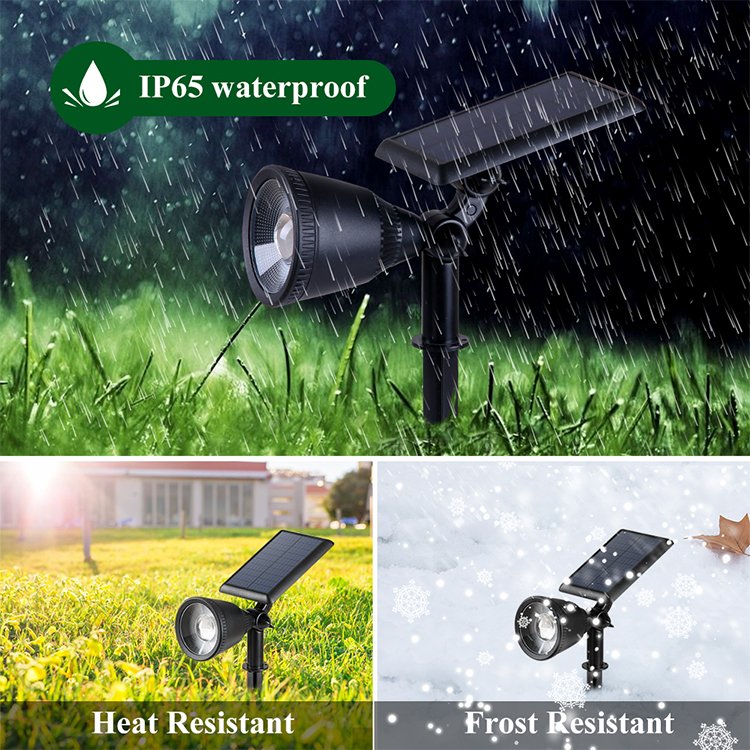As we enter an era of high energy consumption, people are beginning to look at LEDs with novelty and attention. It turns out that LEDs have already sneaked into our lives and opened up a series of unexpected applications. Let’s take a look at where LED is used.
1. Building exterior lighting
Projection of some areas of the building is only the use of control beam angle of the round head and square head shape of the flood light fixtures, which is the same as the traditional concept of flood light fixtures. The LED light source is small and thin, and the development of linear projection luminaires has undoubtedly become a crucial highlight of LED projection luminaires because many buildings only do not have a place to place traditional floodlights. LED is easy to install, can be installed horizontally or vertically, and is better integrated with the building surface, bringing new lighting inspiration for lighting designers and expanding the creative space.
2. Landscape Lighting
Because LED is not like the traditional light source of lamps, mostly glass bubble cases.LEDs can be fine combined with urban street furniture to illuminate leisure Spaces in the city, such as paths, stairs, decks, waterfronts, gardening, etc. For flowers or low shrubs, LEDs can also be used as a light source for illumination.LED recessed projectors are particularly popular. Its fixed end can be designed to pull in and adjust according to the height of the plant.

3. Signage and directional lighting
Need for space limit and guide sites. Such as road pavement separate display, stair step of local lighting, and lighting orders of the emergency exit. It is necessary to use LED self-emitting buried light with appropriate surface brightness or lamps embedded in the vertical wall, such as the ground guide light or the seat side indicator light in the theatre auditorium and the floor guide light in the shopping center. In addition, compared with neon lights, LED is worth promoting the use in sign design because it is low-voltage and has no fragile glass, which will not increase the cost because of bending in production.
4. Indoor space display lighting
In terms of lighting quality, LED light sources have no heat, ULtraviolet and infrared radiation, so there will be no damage to exhibits or commodities. Compared with traditional light sources, LEDs do not require additional filters. Led lighting systems are simple, inexpensive, and easy to install. Its precise lighting distribution can be used as an alternative to fibre optic lighting in museums. Commercial lighting generally uses colored LEDs. White LED for interior decoration can be combined with interior decoration to provide auxiliary lighting for the interior, and concealed light strips can also use LEDs, which are particularly beneficial for flat spaces.
5. Entertainment venues and stage lighting
Thanks to LED’s dynamic, digital control of color, brightness, and dimming, lively saturated colors can create static and dynamic lighting effects. From white light to any color in the full spectrum, the use of LEDs opens up new ideas in the lighting of such spaces. The long life and high lumen maintenance value (90% luminous flux after 10,000 hours) reduce maintenance costs and the frequency of light source replacement compared to the 50 to 250-hour life of PAR and metal halide lamps. In addition, LED overcomes the phenomenon of color shift after a period of use of metal halide lamps. Compared with PAR lamps, there is no heat radiation, which makes the space more comfortable. Decorating walls with LED-colored lights in restaurant buildings has become popular.

6. Video screen
The filled color LED display screen is the most eye-catching outdoor large display device in today’s world. It uses advanced digital video processing technology and has an unparalleled super large area and super brightness. In addition, the screen is equipped with led lights that can also be used according to different indoor and outdoor environments, using a variety of specifications of light-emitting pixels to achieve different brightness, color, and resolution to meet a variety of uses. LED display can also be used to dynamically display graphic animation information, and the use of multimedia technology can play all kinds of multimedia files. The world’s most mighty LED display, The most influential LED display in the world is the New York Stock Exchange in Manhattan, USA, which uses 18,677,760 LEDs and covers 10,736 square feet. The screen can be divided into multiple screens while simultaneously displayed, presenting the Wall Street stock market at a glance in front of the public. Also rising in Shanghai’s Pudong Lujiazui Financial Center, the entire Puxi-facing building façade is encrusted with a 100m-long mega LED screen, totalling 3,600 square meters. It is the first in the world.
7. Vehicle indicator lighting
For vehicle road trade LED navigation information display. In urban traffic, highways, and other fields, LED as a variable indicator light and lighting role instead of similar foreign products are commonly used. Among them, power dispatch, vehicle dynamic tracking, vehicle dispatch management, etc., are also gradually adopting high-density LED displays to play the role of indicator lighting.
LED technology is in rapid progress. It is environmentally friendly, with no harmful substances. LED bulb components can be easily disassembled and assembled and can be recycled by others without having to be recycled by the manufacturer. And the light distribution technology extends the LED point light source to the surface light source, increasing the luminous surface, eliminating glare, sublimating the visual effect, and eliminating visual fatigue. High power LED plane cluster package, heat sink, and lamp holder integrated design. Fully ensure the led heat dissipation requirements and service life, fundamentally meet the led lamps and lanterns structure and shape of any project, very led lamps and lanterns uniqueness.
Is that why we can see LED lights everywhere when we walk on the street or in scenic spots? It can be applied to everything.



